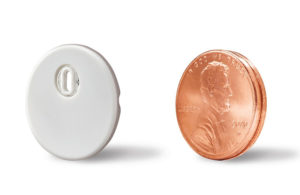
The latest version of the company’s FreeStyle Libre platform — designed as the smallest and thinnest CGM sensor in the world at the size of just two stacked U.S. pennies — picked up FDA clearance for people with diabetes aged four years old and up just last week.
Late-breaking data highlighting the mean absolute relative difference (MARD) — a measure of sensor accuracy — for the recently cleared CGM was presented at the American Diabetes Association (ADA) 82nd Scientific Sessions in New Orleans. Abbott said in a news release that the data, which demonstrated an overall MARD of 7.9%, makes FreeStyle Libre 3 the first and only 14-day CGM to achieve a sub-8% overall MARD
The multi-center study evaluated FreeStyle Libre 3 in people with type 1 or type 2 diabetes aged four years and older who were on insulin therapy. MARD values totaled 7.6% for adults age 18 and up and 8.7% for children between 6-17. For children between 4-5, MARD was 10.1%.
“Abbott revolutionized glucose monitoring with our world-leading FreeStyle Libre technology — the first sensor to eliminate painful fingersticks by offering factory-calibrated continuous glucose monitoring that is affordable, accessible and accurate,” Abbott divisional VP of Global Medical Affairs and CMO of Diabetes Care Dr. Mahmood Kazemi said in the release. “A sub-8% overall MARD for the FreeStyle Libre 3 system is a significant milestone, not just in terms of CGM innovation, but because it empowers people with diabetes to be more confident when making important diabetes management decisions.”
Further data presented by Abbott at ADA showed that FreeStyle Libre helps prevent therapeutic inertia and that the company’s new glucose pattern insights report in the LibreView software platform helps primary care providers identify and treat hypoglycemia events that are missed when using standardized reports.
An analysis of retrospective data collected over 24 months from more than 370,000 patients with type 2 diabetes in Canada showed that FreeStyle Libre data helped clinicians make earlier decisions or adjustments to type 2 diabetes treatments versus making decisions based on conventional blood glucose monitoring, the company said.
Its comparative study showed that LibreView’s glucose pattern insights better identify patterns of poor glycemic control and offer considerations for the clinician, Abbott said.

